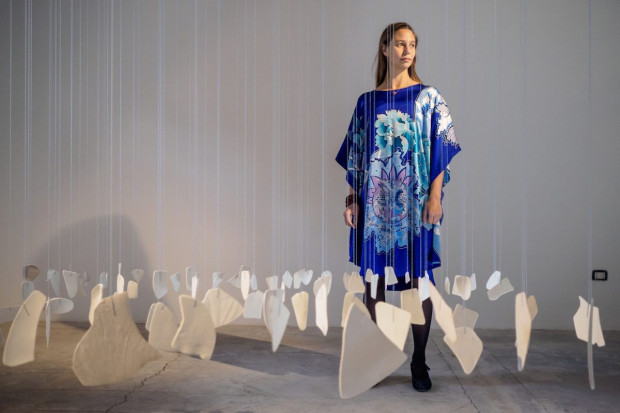
Violinists Helena Wood, Katherine Hunka, Mia Cooper and Ioana Petcu-Colan.
Violin Reflections
A programme performed by four violinists must, by necessity, be an odd collection of works. This programme, presented by Music Network and featuring leaders from four of the main Irish orchestras, Mia Cooper (RTÉ Concert Orchestra), Katherine Hunka (Irish Chamber Orchestra), Ioana Petcu-Colan (Ulster Orchestra) and Helena Wood (RTÉ National Symphony Orchestra), may indeed have been unusual but it illustrated the many possibilities in the coming together of these distinctive players.
Built around Ian Wilson’s new work – which was initially responsible for bringing these four players together – the programme spread outwards in both directions in a series of reflections: between approaches to didactic music, between composers across centuries, and between the musical shape of the first and second half. The concert brought to light some little-known works and composers (such as the Polish violinist/composer Grażyna Bacewicz) and was shot through with humour and lightness paired with the players’ easy confidence.
Four styles
The concert began with a solo Mia Cooper giving a wry performance of Rodion Schedrin’s Balalaika, originally written for Maxim Vengerov, though the plucked and strummed rhythms (imitating the Russian folk instrument) were a little lost in the long reverbs of St Ann’s Church. This was a factor that was problematic in much of the more rhythmically detailed works of the concert, though it lent itself well to pieces such as those by Telemann and Halvorsen.
A selection of eight of Béla Bartók’s 44 duos introduced the rest of the players in a rotating system that even they, humourously, lost track of, though these playful works allowed us to hear the style of each player in turn: Mia Cooper is a player of great strength and directness, whose playing always came quickly to the fore; Ioana Petcu-Colan has the most intriguing sound and tone, occasionally creating direct, hard-edged sounds that were unexpected in the context of these pieces; Katherine Hunka is a refined player whose sense of subtlety and movement added much to the shape and texture of works with multiple players; Helena Wood was the most versatile in tone, always able to occupy a space where the other players were not, and brittle and beautiful in solo passages.
Two frothy Capriccios by Friedrich Hermann (1828–1907) seemed frivolous following the Bartók, and slightly misplaced too in preceding the rather heavier Quattro Stagioni from Ian Wilson. The four movements of this new work were based on one of American artist Cy Twombly’s paintings of the same name, each reflecting a different season, and in the words of the composer meditating ‘on the cyclical nature of life’. Though there were some interesting moments, in particular the fluttering tremolos of the ‘Primavera’ movement or the airless textures of ‘Estate’, the work did not have the material and textural variety or innovation of other recent Wilson music, such as the Alluvio string quartet.
Highlight
The second half began with what was a highlight of the programme, Telemann’s Concerto in G major. Another four-movement work – acting as a second-half reflection of the Wilson – this was beautifully rendered by the four players with delicacy and movement, without leaning too far into becoming either overwrought or facile. This was followed by Norwegian composer Johan Halvorsen’s (1864–1935) Passacaglia (after Handel’s Suite No. 7 in G minor for harpsichord). Like its source material, this was at once serious and playful, but also romanticised the material with large dynamic and tonal shifts.
A ‘teaching piece’ like the Bartók duos, Grazyna Bacewicz’s (1909–1969) Quartetto per 4 violini was another reflection on the first half. Like the duos, this work – strongly redolent of the neoclassicism of Stravinsky – also exposed the sonic relationships between the players as well as the sonic challenges of a violin quartet (in particular regarding pitch and timbre balance) though the players seemed unfazed by this exposure. An energetic arrangement of Skip Martin’s swing version of Paganini’s Caprice in A minor, Op. 1, No. 24, closed the concert as it began, with smiles and clear enjoyment from the players and audience.
For upcoming Music Network tours, visit www.musicnetwork.ie
Published on 2 May 2017
Anna Murray is a composer and writer. Her website is www.annamurraymusic.com.

















